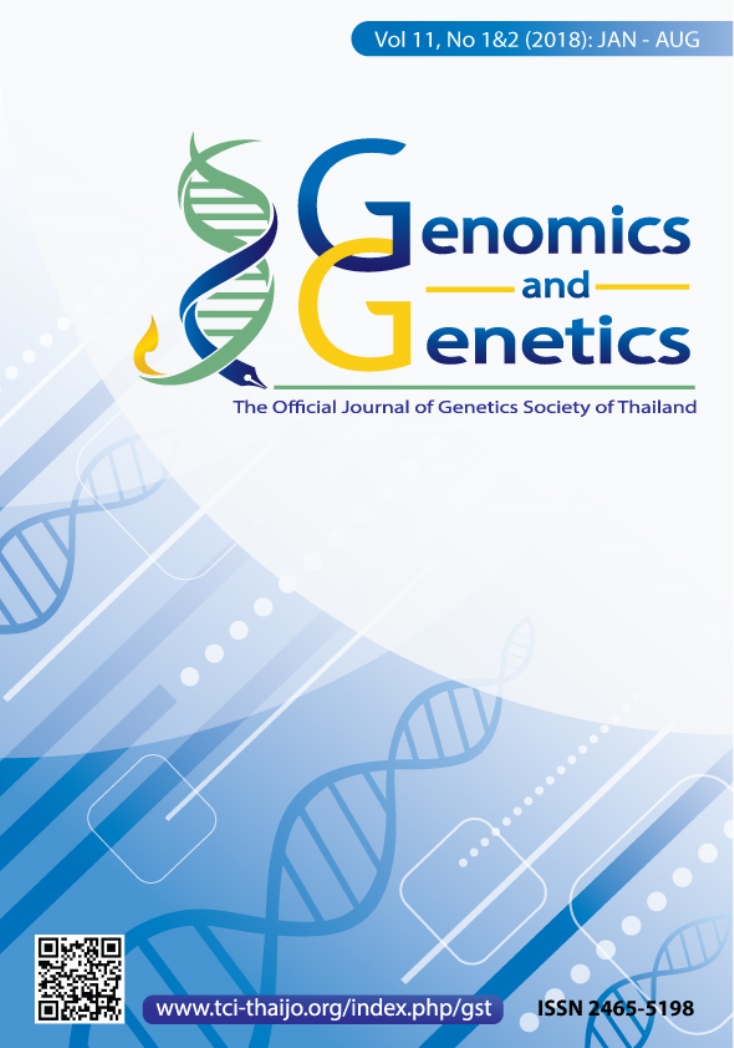In Silico Assisted Cloning and Analysis of Genes Involving anti-viral defense based on RNA silencing in Papaya (Carica papaya L.)
DOI:
https://doi.org/10.14456/gag.2018.2Keywords:
Key words: Gene Cloning; RNA-dependent RNA polymerase 6; Argonaute 1; Dicer-like ribonucleases 4Abstract
ABSTRACT
Papaya (Carica papaya L.) is planted throughout tropical and sub-tropical regions. One important problem of papaya production is that the Papaya ringspot virus (PRSV) can be induced by the RNA silencing mechanism to mount an antiviral defense. In silico assisted cloning was a part of bioinformatics to help genes prediction from whole genome shotgun database. The aim of this study was using in silico assisted cloning and expression to analyse RDR6, DCL4 and AGO1 genes which involved in RNA silencing in papaya. The complete coding region sequences obtained from cloning of CpRDR6 and CpAGO1 gene were 3,588 bp (KF668595.1) and 3,180 bp (KY082908) coding for 1,196 and 1,060 amino acids, respectively. The partial CpDCL4 consisted of 3,207 bp (KY082909) encoding for 1,068 amino acid. The phylogenetic tree analyses could clearly differentiate the RDR6, AGO1 and DCL4 with other groups and showed the same relationships among plant species. The 3D structures of CpRDR6 and CpAGO1 were successfully generated and ligand binding site residues were identified. The expression patterns were investigated in different tissue and under PRSV infected condition at indicated time points of 1, 3, 5, 7, 9, 11 and 14 days post-inoculation. The results showed that the expression level of genes involved in RNA silencing could be induced by PRSV. The aid of in silico combining with freely available bioinformatics softwares would be useful and speed up the cloning, analysis of the target gene, and study of the structure of protein that have not been reported in papaya.Downloads
Published
2018-12-19
Issue
Section
Research Articles



